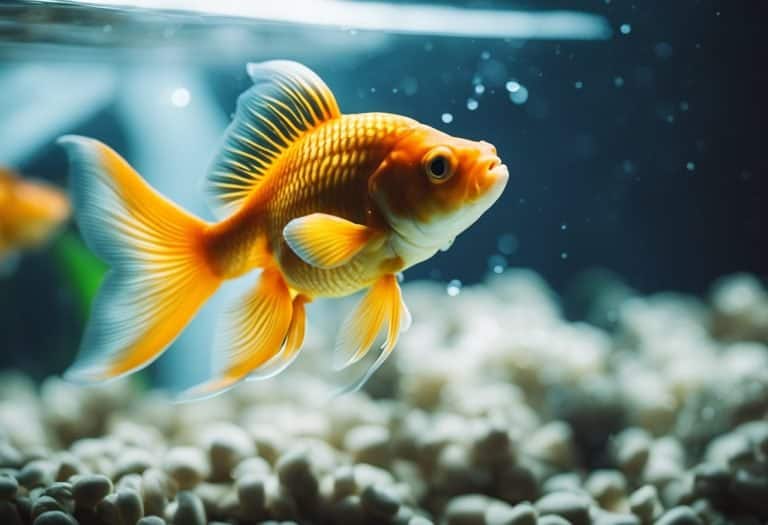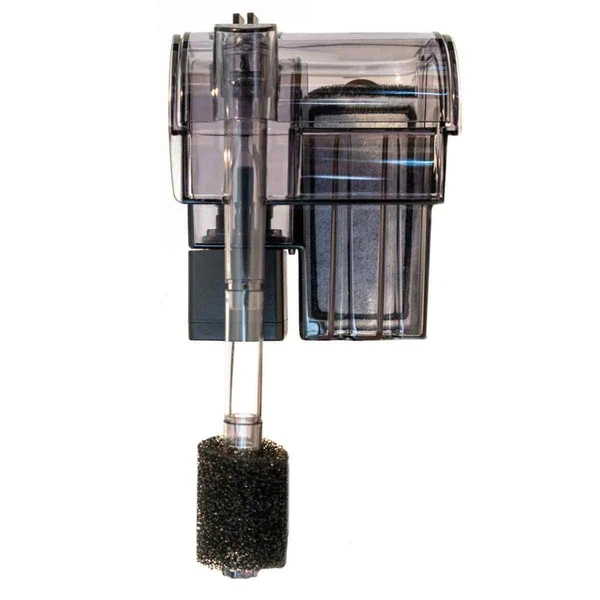Welcome to our informative blog post where we will discuss whether goldfish scale fungal infections can impact other fish breeds. As an avid fish enthusiast, it is crucial for you to understand the potential risks posed by such infections to ensure the well-being of your beloved aquatic companions.
While goldfish are particularly vulnerable to fungal infections due to certain physiological factors, it is important to highlight that the scope may extend beyond just goldfish. By examining the causes, symptoms, and preventive measures of goldfish scale fungal infections, you can successfully safeguard your entire fish community from this potentially harmful condition.
Key Takeaways:
- Goldfish scale fungal infections can potentially affect other fish breeds.
- Preventive measures should be taken to minimize the risk of spreading fungal infections between fish species.
- Proper quarantine protocols and regular monitoring can help prevent and control the spread of fungal infections among different fish breeds.
The Nature of Goldfish Scale Fungal Infections
If you are a fish owner, especially of goldfish, it is essential to be aware of the various health issues that can affect your aquatic companions. One such concern is the occurrence of fungal infections on goldfish scales. Understanding the nature of these infections can help you take appropriate measures to address them promptly and prevent their spread. In this chapter, we will delve into the causes, symptoms, and effects of goldfish scale fungal infections.
The Cause of Fungal Infections
Fungal infections on goldfish scales are primarily caused by an unhealthy aquatic environment. When the water quality deteriorates, it becomes a breeding ground for fungus and other harmful microorganisms. Poor maintenance, including infrequent cleaning of the tank or pond, inadequate filtration, and overfeeding, can create an environment that promotes fungal growth. Additionally, stress, injuries, or a weakened immune system can make your goldfish more susceptible to fungal infections. It is crucial to maintain a clean and balanced aquatic environment to minimize the risk of these infections.
Symptoms and Effects of Fungal Infections on Goldfish
Fungal infections on goldfish scales manifest themselves through various visible symptoms. You may notice fuzzy, cotton-like patches on the fish’s body, fins, or eyes. These patches can range in color from white and gray to green or yellow. As the infection progresses, the affected areas may become ulcerated or inflamed, resulting in redness and irritation. In severe cases, the scales may become eroded or fall off entirely, leaving the underlying tissues vulnerable to further damage.
Fungal infections can significantly impact the overall health and well-being of your goldfish. They can weaken the fish’s immune system, making it more susceptible to other diseases or infections. The discomfort caused by these infections can lead to loss of appetite, decreased activity, and even lethargy. If left untreated, the fungal infection can spread, causing systemic infections that may prove fatal for your goldfish.
Remember, prompt identification and treatment of fungal infections are crucial for the well-being of your goldfish. In the upcoming chapters, we will explore the preventive measures and treatment options available to you. By taking proactive steps to maintain a healthy aquatic environment and addressing fungal infections promptly, you can ensure the longevity and vitality of your goldfish.
Fungal Infections Transmissibility across Different Fish Breeds
If you are a fish owner, you may wonder whether a fungal infection that affects goldfish could also pose a threat to other fish breeds. In this chapter, we will delve into the topic of fungal infections transmissibility across different fish breeds. Understanding the potential for crossbreed contagion is crucial for the health and safety of your entire fish population.
Examining Inter-Breed Contagion
When it comes to the transmission of fungal infections between different fish breeds, the risk is relatively low. Fungal infections tend to be species-specific, meaning they primarily affect a particular type of fish species. While it is not impossible for a fungus to cross over to a different breed, it is highly uncommon.
Research has shown that the chances of crossbreed contagion are further minimized when you maintain proper aquarium hygiene, water quality, and optimal fish care practices. By ensuring a clean and healthy aquatic environment, you can significantly reduce the chances of any fungal infection spreading across different fish breeds in your aquarium.
Species-Specific Immunity
One of the key factors leading to the low transmissibility of fungal infections among different fish breeds is species-specific immunity. Each fish species has evolved with its own unique immune system, allowing them to combat specific pathogens they are naturally exposed to. Fungal infections in one species may not affect other species due to the differences in their immune responses and susceptibility.
It is important to recognize that the immune system of your fish plays a crucial role in preventing the spread of fungal infections. By providing a proper diet, maintaining optimal water conditions, and minimizing stress factors, you can boost your fish’s immune system, making them less vulnerable to fungal infections.
In conclusion, while fungal infections can be a concern in aquariums, the transmissibility across different fish breeds is generally low. By implementing good aquarium practices, focusing on species-specific immunity, and ensuring proper care for all your fish, you can minimize the risk and maintain a healthy environment for your aquatic friends.
Prevention and Treatment of Fungal Infections
Now that we have discussed the potential impacts of goldfish scale fungal infections on other fish breeds, it’s crucial to delve into the prevention and treatment measures available. By taking proactive steps to prevent fungal infections in your aquarium and knowing how to effectively treat them if they do occur, you can ensure the overall health and well-being of all your fish.
Preventive Measures for Fungal Infections in Aquariums
Fungal infections can be detrimental to the health of your fish and their environment, but there are several preventive measures you can take to minimize the risks. Firstly, maintaining good water quality is paramount. Regularly testing the water parameters and ensuring they are within the appropriate range for your fish is essential. High ammonia and nitrate levels, for example, can weaken their immune systems, making them more susceptible to fungal infections.
In addition to water quality, providing a clean and well-maintained aquarium environment is crucial. Regularly clean and replace the filter media, remove any uneaten food or decaying plants, and perform partial water changes to keep the water clean and free from potential fungal spores. It’s also important not to overcrowd the tank, as overcrowding can stress the fish and make them more prone to infections.
Introducing new fish into your aquarium should be done with caution. Always quarantine new fish in a separate tank before adding them to your main aquarium. This allows you to observe them for any signs of fungal infections or other diseases. By keeping new fish separate for a period of time, you can prevent the spread of potential infections to your existing fish population.
Effective Treatment Solutions for Fungal Infections
If you notice any signs of fungal infections in your fish, it’s crucial to take immediate action. There are various treatment solutions available that can effectively combat fungal infections and prevent them from spreading further.
One of the most common treatment options is the use of antifungal medications, which are available in various forms such as liquid, powder, or granules. These medications can be directly added to the aquarium water or applied topically to the affected fish. It’s important to carefully follow the dosage instructions provided and continue the treatment for the recommended duration to ensure complete eradication of the infection.
In addition to medication, maintaining optimal water conditions and improving the overall health of your fish is vital. Providing a balanced diet, ensuring proper filtration and aeration, and minimizing stress factors can all contribute to enhancing your fish’s immune system and aiding in their recovery from fungal infections.
Remember, early detection and prompt treatment are key to successfully combating fungal infections in your aquarium. By following these preventive measures and using appropriate treatment solutions, you can minimize the risks and keep your fish in optimal health.
Conclusion
By considering the information presented, you now have a better understanding of the potential impact of goldfish scale fungal infections on other fish breeds. While goldfish are more susceptible to fungal infections due to the unique structure of their scales, it is important to note that these infections can also spread to other fish species if proper quarantine and hygiene measures are not implemented. It is essential for you, as a fish owner, to maintain a clean and healthy environment for all your fish to prevent the spread of fungal infections and ensure the overall wellbeing of your aquatic companions.





